Currently Empty: $0

The pandemic taught us all how to work differently. This includes call centers, which have had to adapt to managing agents from afar. The change in the work environment requires new behavior, precautions, and methods to measure call center performance. In order to effectively oversee remote agents, managers need new data to assist in finding productivity gaps and training opportunities.
While the calls may follow the same patterns and flow with traditional workforce management techniques, the shift to remote work has changed how agents work and perform after and between calls. Traditional metrics, such as average handle time (AHT), after-call work (ACW), and first-call resolution, are still staples for measuring outcomes.
However, as leaders see these traditional metrics adjust to remote models, they need a new set of data to inspect and develop best practices. Companies must now focus on metrics that take into account the unique challenges of remote work.
One important metric is agent availability and adherence. In a traditional call center, agents are physically present and can be made available to take calls; in a remote environment, agents may be distracted by household interruptions (e.g., a dog barking, a delivery driver ringing a doorbell, etc.), leading to decreased availability. Companies should track agent presence to ensure availability, and as ACW time extends, it impacts planning.
Here are a few ways ACW can increase in a remote environment.
1. Limited Access To Resources: Remote workers may not have immediate access to the same resources and tools as in-office workers. This can make resolving customer issues during the call more challenging, leading to more extended ACW periods.
2. Increased Distractions: Remote workers may face more distractions than in-office workers, such as noisy environments or interruptions from family members. These distractions can cause remote workers to take longer to complete ACW tasks.
3. Communication Challenges: Remote workers may face communication challenges when working with their team or supervisors. For example, they may need to spend additional time clarifying instructions or getting feedback on their work.
4. Technical Difficulties: Remote workers may experience technical difficulties, such as internet connectivity issues or problems with software and tools.
5. Lack Of Physical Cues: Remote workers may have different physical cues than in-office workers, making it more challenging to gauge when a customer interaction is truly over.
Leaders and front-line managers should consider embracing new measures such as desktop activity to identify delays affecting customer engagement.
Remote call centers present unique challenges when it comes to success measurements. In addition to tracking traditional metrics, companies should also track non-call-related activities, such as training, meetings, and administrative tasks all through the desktop. Companies can then ensure that agents receive the support they need to succeed, while not overstepping needed customer time.
Here are some of the most significant methods to measure the new virtual call center.
1. Employee Engagement And Productivity: Remote work has made it more challenging for managers to monitor agent performance and engagement. As a result, call centers are turning to new data sources to measure agent performance and identify areas for improvement.
For example, desktop analytics can demonstrate the rate of flow, illustrate the number of distractions, identify training issues, and view if agents have too much screen time, putting them at risk of burnout.
2. Cybersecurity: Call centers need to ensure the security of their data and systems, particularly as call center agents work remotely. This has led to the adoption of new security measures, such as virtual private networks (VPNs) and multifactor authentication (MFA). These security measures generate new data that can be used to optimize cybersecurity and prevent breaches.
3. Customer Experience: Remote work has created new challenges for call centers in terms of providing high-quality customer experiences. Call centers need to ensure that agents have access to the correct information and tools to resolve customer issues quickly and effectively, such as customer feedback and call center performance metrics, which can be analyzed to optimize the customer experience.
With these metrics, remote managers can identify productivity gaps and provide the support agents need to succeed. Companies can use this data to make informed decisions about staffing and resource allocation.
Overall, the shift to remote work has changed the call center metrics that are used to measure the performance of both employees and customers. Companies must adapt to this new environment by implementing and celebrating new work motions with transparency and clear expectations.
With the correct data, tools, and coaching in place, companies can ensure that their call center operations remain productive and successful, even in a remote environment. Without it, they risk employee attrition to better work environments.
Source: GWFM Research & Study








